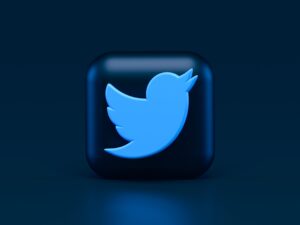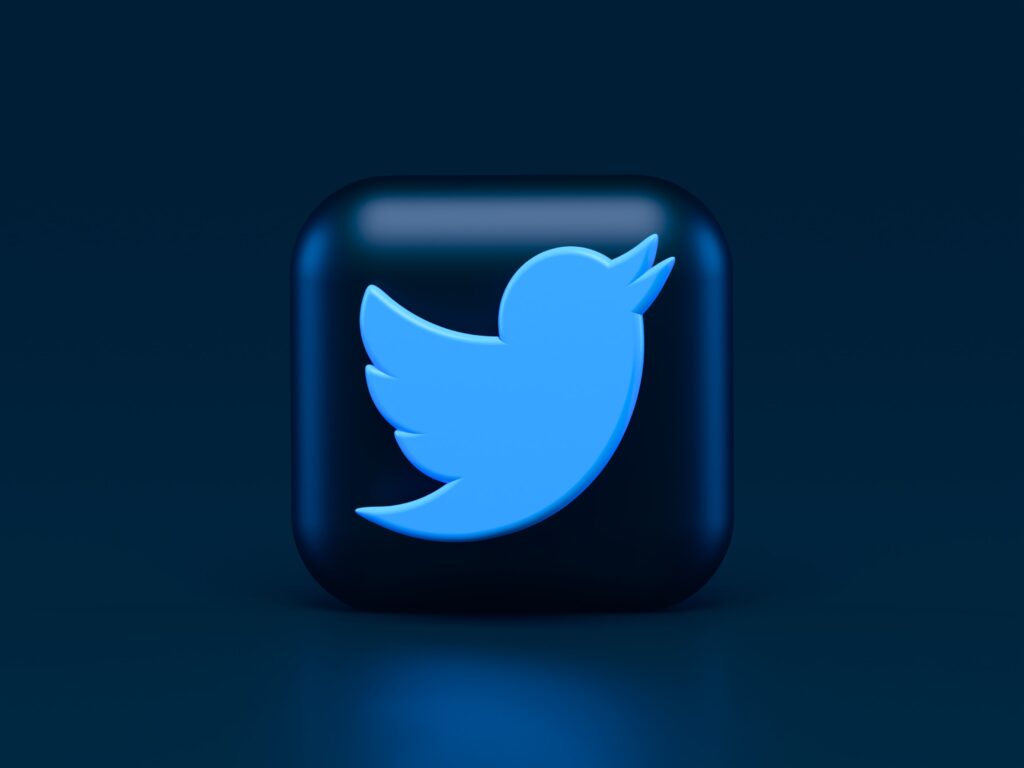J. Stillman Hanson, Jr.
Last year was dramatic for Elon Musk (“Musk”), even by his standards, largely due to his highly publicized acquisition of Twitter, Inc. (“Twitter”).[1] In April 2022, Twitter’s board of directors accepted Musk’s offer to buy Twitter at a price of $54.20 per share, and the parties entered into a binding merger agreement.[2] Musk attempted to back out of the deal which culminated in Twitter suing Musk in July 2022, for material breach of the merger agreement.[3] Twitter sought to compel Musk to specifically perform his obligations under the merger agreement by closing the deal on its terms.[4] With a deal volume of $44 billion at stake, Twitter engaged Wachtell, Lipton, Rosen & Katz (“Wachtell”) to enforce its contract with Musk.[5]
Wachtell’s litigation team moved quickly to expedite the trial to October 2022, and performed a considerable amount of legal work for Twitter in a condensed timeline of 3 months.[6] Engaging Wachtell ultimately paid off for Twitter’s shareholders; in early October 2022, Musk informed the court he would complete the transaction under the merger agreement’s terms.[7] The $44 billion deal closed on October 27, 2022, the same date Twitter paid Wachtell’s total legal fee of $90 million.[8] A Bloomberg columnist evaluated Wachtell’s successful result as “worth about $25 billion to Twitter’s shareholders,” and he additionally opined that “[p]aying Wachtell 0.3% of the value recovered as a success fee seems pretty reasonable.”[9] Musk, however, does not share this opinion, as illustrated by the complaint filed by X Corp., Twitter’s successor-in-interest, against Wachtell on July 5, 2023.[10]
X Corp. alleges that Twitter engaged Wachtell’s representation on a strictly hourly fee arrangement and that at the last minute before the deal closed, Wachtell acted improperly by seeking and receiving the final legal fee approved by Twitter’s board of directors.[11] X Corp. seeks equitable relief from Wachtell for the claims of restitution, breaches of fiduciary duty, and charging an unconscionable fee in violation of state laws.[12] X Corp. faces an uphill legal battle against Wachtell which it should ultimately lose.
I. X Corp. v. Wachtell should be arbitrated.
The initial challenge for X Corp. is that this lawsuit is likely headed for arbitration, where Twitter and Wachtell already agreed that it should go. Wachtell responded to X Corp.’s complaint by filing a Motion to Compel Arbitration and a supporting memorandum on September 8, 2023.[13] Wachtell’s memorandum contends that by filing this lawsuit, Musk and X Corp. breached the Arbitration Clause of Twitter’s Master Retention Agreement with Wachtell.[14] X Corp.’s own complaint affirms that the Master Retention Agreement is a binding contract,[15] so Wachtell reasons that neither its validity nor enforceability are contested.[16] Instead, Wachtell speculates that X Corp.’s claims for relief are styled as equitable or injunctive to exempt them from the Arbitration Clause.[17]
Wachtell has two strong arguments for compelling arbitration. First, when the scope of arbitration is disputed, the parties contracted to have the arbitrator decide this threshold issue by both express delegation and incorporated JAMS[18] rules.[19] Second, X Corp.’s claims seeking restitution of Wachtell’s fee are not automatically considered equitable if there is an adequate remedy at law.[20] Despite X Corp.’s characterization as restitution in equity, Wachtell solidly argues X Corp. is actually claiming for restitution at law because it seeks money damages: repayment of Wachtell’s purportedly excessive fee.[21] For these reasons, the judge should stay this proceeding pending arbitration that will resolve the scope issues and potentially the entire case.
II. Wachtell’s fee was reasonable.
X Corp.’s case against Wachtell is also weak because Wachtell’s legal fee was fair and reasonable. X Corp. advances that the Master Retention Agreement executed by Wachtell on June 21, 2022, and by Twitter on July 28, 2022, dictated only paying Wachtell by the billable hour, lacked a provision for a potential success fee, and contained a merger clause superseding all prior agreements.[22] Twitter’s former head of litigation, Karen Colangelo, sent an email prior to the execution of the Master Retention Agreement mentioning a potential success fee, and X Corp. has a valid point that this provision did not make it into the executed Master Retention Agreement.[23] However, the Master Retention Agreement was not the final understanding of the parties prior to the deal closing.
Wachtell handled the merger litigation under the hourly Master Retention Agreement and billed Twitter for a total of $17,943,567.49 between August and September 2022, and Wachtell estimated an additional accrual of $11 million in October, 2022.[24] In the complaint, X Corp. posits that Wachtell’s $90 million legal fee is unconscionable because it is well beyond the total amount of Wachtell’s hourly invoices.[25] Wachtell’s memorandum addresses this allegation by stating its lawyers invested over $40 million into the case in time and expenses, which decreases the gap between the total hourly fees and final legal fee.[26] Furthermore, Wachtell references multiple news outlets reporting that the $90 million fee was a tiny fraction of the total $44 billion transaction volume, and that Twitter got “its money’s worth” and a “fantastic deal” given that the deal would have collapsed without forcing Musk to comply with the merger agreement.[27]
X Corp. alleges that although Wachtell’s litigation work had successfully concluded, Wachtell pressured Twitter in the two weeks preceding the closing to amend the Master Retention Agreement to pay a success fee.[28] X Corp. laments that the final legal fee paid to Wachtell “provided no value to Twitter or its shareholders” and “amounted to a huge cash gift.”[29] X Corp.’s proffered gift violations, under Cal. Rule of Pro. Conduct 1.8.3 and N.Y. Rule of Pro. Conduct 1.8(c), fail to see the value of Wachtell’s hard work.
While X Corp. feels Wachtell and Twitter’s former officers and directors acted improperly, Twitter chose to recognize the $44 billion value Wachtell provided to the company’s shareholders. In fact, Colangelo’s email[30] indicates Twitter and Wachtell may have had an understanding of the success fee all along, weakening X Corp.’s claim that the success fee was hurriedly paid by Twitter’s board of directors lacking factual information and authority for the decision.
III. Twitter’s board of directors had authority to pay Wachtell.
Twitter’s board of directors acted independently in good faith to compensate Wachtell for high-quality legal services, a far cry from unlawful business practices under Cal. Bus & Prof. Code § 17200. Although Cal. Bus & Prof. Code § 6147 gives requirements for contingent fees, as X Corp. repeatedly points out, the details of the success fee were agreed upon after the deal had already become a success; this rendered the fee no longer contingent on anything. Under Cal. Rule of Pro. Conduct 1.5, Twitter gave informed consent to the fee, and considering the labor required under the time limitations and the results obtained, Wachtell’s fee was fair. Despite X Corp.’s interpretation that Section 6.1(e) of the merger agreement[31] limited Twitter’s discretion to increase Wachtell’s fee prior to closing,[32] Twitter agreed to pay Wachtell’s legal fee in the ordinary course of business considering Twitter had never faced this extraordinary merger litigation in the past.
Investment banks regularly receive success fees on large transactions,[33] but Wachtell’s fee is not covered by Section 4.21 of the merger agreement[34] limiting investment banking and similar fees because it is a fee for legal rather than brokerage services. On October 20, 2022, Wachtell disclosed to Twitter similar legal fee arrangements from mergers or acquisitions in the past three years where Wachtell had received fees ranging from 67% to 100% of the investment banking fees on those deals.[35] Wachtell was transparent about these past arrangements, and Twitter’s board of directors felt comfortable following a similar compensation route. Just before the closing, Wachtell and Twitter effectively amended their fee arrangement and memorialized their final contract in the Closing Day Letter Agreement approved by Twitter’s independently advised board of directors at the last board meeting.[36]
X Corp. pleads that Twitter’s board of directors were lame ducks when they approved Wachtell’s fee,[37] yet when Twitter authorized the wire to Wachtell at 12:07 p.m. on the closing date, and when the wire processed and posted at 3:50 p.m., 10 minutes before the deal closed,[38] Twitter was still under the full control of its board of directors who had every right to pay Wachtell’s legal fee.[39] Twitter knew what it was doing: paying a legal fee that it is doubtful Musk ever would have honored considering that under his leadership, X Corp. has followed a consistent pattern of refusing to pay Twitter’s former employees, landlords, and vendors.[40] Contrary to Musk’s belief, honoring to pay a legal vendor for services rendered does not amount to a breach of fiduciary duty.
Twitter’s board of directors acted with authority in paying Wachtell’s legal fee. Clients and attorneys regularly agree to fee arrangements. If the amount of work performed exceeds a previously agreed upon fee, the parties are free to amend the final fee to accurately reflect the value of the services. Here, Twitter paid Wachtell according to its reasonable appraisal of Wachtell’s legal services, and the court should not question Twitter’s judgment.
[1] See Isaac Hopkin, How Twitter’s Whistleblower Helps Musk, Wake Forest L. Rev. Current Issues Blog (Oct. 5, 2022), https://www.wakeforestlawreview.com/2022/10/how-twitters-whistleblower-helps-musk%ef%bf%bc/.
[2] Press Release, Twitter, Inc., Elon Musk to Acquire Twitter (Apr. 25, 2022).
[3] See Verified Complaint at 5, Twitter, Inc. v. Musk, C.A. No. 2022-0613-KSJM (Del. Ch. Jul. 12, 2022).
[4] See id.
[5] See Memorandum of Points and Authorities in Support of Defendant Wachtell, Lipton, Rosen & Katz’s Motion to Compel Arbitration and for a Stay of Proceedings Pending Disposition of this Motion and Arbitration at 6, X Corp. v. Wachtell, Case No. CGC-23-607461 (Cal. Super. Ct. Sept. 9, 2023) [hereinafter Wachtell’s Memorandum].
[6] See id. at 8.
[7] See id.
[8] See Complaint for (1) Restitution (Unjust Enrichment) (2) Breach of Fiduciary Duty (3) Aiding and Abetting Breach of Fiduciary Duty (4) Violation of Cal. Bus. & Prof. Code § 17200 at 1, X Corp. v. Wachtell, Case No. CGC-23-607461 (Cal. Super. Ct. Jul. 5, 2023) [hereinafter Complaint].
[9] Wachtell’s Memorandum, supra note 5, at 9 (quoting Matt Levine, Elon Musk Blames the Lawyers, Bloomberg (Jul. 11, 2023), https://www.bloomberg.com/opinion/articles/2023-07-11/matt-levine-s-money-stuff-elon-musk-blames-the-lawyers#xj4y7vzkg).
[10] See Complaint, supra note 8, at 1–2.
[11] See id.
[12] See id. at 24–31.
[13] See Wachtell’s Memorandum, supra note 5, at 5.
[14] See id. at 9.
[15] See Complaint, supra note 8, at 2.
[16] See Wachtell’s Memorandum, supra note 5, at 10.
[17] See id.
[18] See, e.g., The JAMS Name, JAMS, https://www.jamsadr.com/about-the-jams-name/ (last visited Oct. 3, 2023) (stating that JAMS is a leading provider of alternative dispute resolution services, and the name JAMS was previously an acronym for Judicial Arbitration and Mediation Services, Inc.).
[19] See Wachtell’s Memorandum, supra note 5, at 13.
[20] See id. at 17 (citing Martin v. Cnty. of Los Angeles, 51 Cal. App. 4th 688, 695–98 (1996)).
[21] See id. (citing Jogani v. Super. Ct. 165 Cal. App. 4th 901, 910 (2008); Lectrodryer v. Seoulbank 77 Cal. App. 4th 723, 728 (2000)).
[22] See Complaint, supra note 8, at 8–9.
[23] See id.
[24] See id. at 9–10.
[25] See id. at 1–2.
[26] See Wachtell’s Memorandum, supra note 5, at 8.
[27] Id.
[28] See Complaint, supra note 8, at 26–27.
[29] Id. at 27.
[30] See id. at 8.
[31] See Twitter, Inc., Annual Report (Form 8-K) Ex. 2.1 (Apr. 25, 2022).
[32] See Complaint, supra note 8, at 6.
[33] See Success Fee, Corporate Finance Institute, https://corporatefinanceinstitute.com/resources/valuation/success-fee/ (last visited Oct. 3, 2023).
[34] See Annual Report (Form 8-K) Ex. 2.1, supra note 31.
[35] See Complaint, supra note 8, at Ex. 7.
[36] See Wachtell’s Memorandum, supra note 5, at 8–9.
[37] See Complaint, supra note 8, at 4.
[38] See id. at 19.
[39] See Wachtell’s Memorandum, supra note 5, at 8–9.
[40] See id. at 9; see also Jennifer Kay, Musk’s Twitter, Tesla Fights Ramp Up in Delaware: Explained, Bloomberg Law (Sept. 27, 2023), https://news.bloomberglaw.com/litigation/musks-twitter-tesla-fights-ramp-up-in-delaware-explained.





